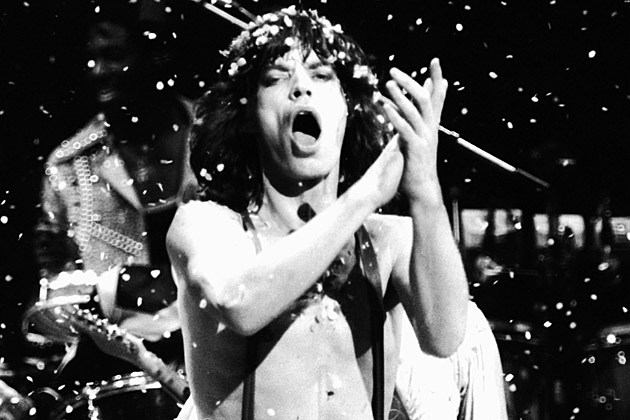
As the Rolling Stones‘ frontman for the past 50 years, Mick Jagger has had the opportunity to show off many different sides. There was the skinny white bluesman in the first part of the ’60s, the swaggering devil of the later part of the decade, the preening rock star he portrayed throughout most of the ’70s, the disco cat of the late ’70s and the rock ‘n’ roll survivor he’s played for the past 30 or so years. He’s rock’s most famous frontman/singer, a role he still cherishes and defends every time he’s onstage. The Stones have always been greater than the sum of their parts, but it’s the individual components that keep them moving. Our list of the Top 10 Mick Jagger Rolling Stones Songs showcases the man who just might be their most important ingredient.
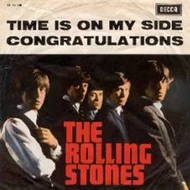
'Time Is on My Side'
From: '12 X 5' (1964)
Unlike the other cuts on our list of the Top 10 Mick Jagger Rolling Stones Songs, the singer didn't have a hand in writing 'Time Is on My Side.' None of the Stones did. The band's first Top 10 U.S. hit was recorded by R&B singer Irma Thomas earlier the same year; they were undoubtedly influenced by her version, especially Jagger, who checks in with his first truly great vocal, nailing the soulful edge infused with a side of gospel.
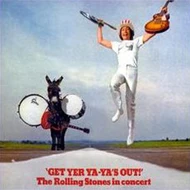
'Midnight Rambler'
From: 'Get Yer Ya-Ya's Out!' (1970)
The studio version of 'Midnight Rambler' (from 1969's 'Let It Bleed') falls in place with the rest of the album's bluesy doom. But the song takes on an even more menacing tone during the concert version found on the Stones' best live album, 'Get Yer Ya-Ya's Out!' The band drags out the song to almost 10 minutes on 'Ya-Ya's,' and Jagger crawls into the cut's dirtiest corners, writhing his way to some sort of release by song's end. It's the closest he ever got to channeling the troubled spirits of the legendary bluesmen he worshiped.
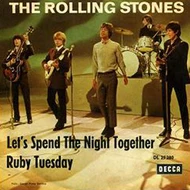
'Let's Spend the Night Together'
From: 'Between the Buttons' (1967)
The Rolling Stones were just revving up to their most creative period when they recorded this single (originally the B-side of the No. 1 'Ruby Tuesday') in late 1966. The Stones were beginning to find their own voice, and Jagger, particularly, stopped copying American blues and R&B singers and started working within the natural tone of his vocals. 'Let's Spend the Night Together' drips with sexy urgency.
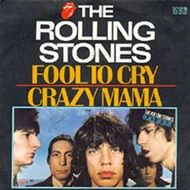
'Fool to Cry'
From: 'Black and Blue' (1976)
We don't have many nice things to say about 'Black and Blue,' the lazy 1976 album the Stones recorded between 'It's Only Rock 'n' Roll' and 'Some Girls.' But this plaintive ballad (and Top 10 hit, a testament to the band's strong but sagging chart prowess at the time) features one of Jagger's most emotionally stirring and powering performances. For years he tried to ace the sweet, simmering soul of American R&B artists. On 'Fool to Cry' he nearly got there.
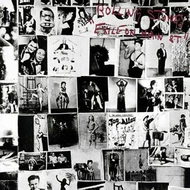
'Tumbling Dice'
From: 'Exile on Main St.' (1972)
The Stones' classic 'Exile on Main St.' album was famously made in a drug-fueled haze that brought the finished recordings down to a sludgy, murky crawl. It's absolutely brilliant at times, even if the details are hard to pick out. We love Jagger's performance throughout the LP, but he's at his most swaggering on the album's hit single, 'Tumbling Dice.' You may not be able to hear it clearly, but the band's confidence overflows here.
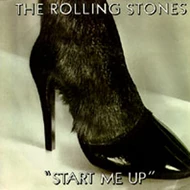
'Start Me Up'
From: 'Tattoo You' (1981)
As they were heading into the '80s, the Stones had very little left to prove. Which is why so many of their records from the past 30 years are so lazy and boring. But 1981's 'Tattoo You,' their last truly great album, features some of the band's best songs. Many were pulled together from mid-'70s sessions, when Jagger wore his rock-star crown with one eye on the competition. He sings 'Start Me Up,' the LP's best song, with defensive authority.
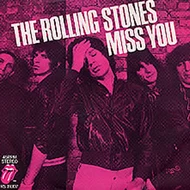
'Miss You'
From: 'Some Girls' (1978)
After a few years of creative and personal missteps, sluggish albums and dwindling inspiration, the Stones took a more defensive path to their music (also see No. 5 on our list of the Top 10 Mick Jagger Rolling Stones Songs). 'Some Girls' was a counter blow to both punk and disco, which were cutting into the band's profits and influence. On 'Miss You,' the album's hit single, Jagger strikes a disco pose like a natural, checking in with one of his all-time best performances.
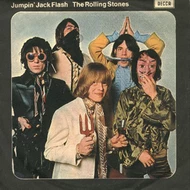
'Jumpin' Jack Flash'
From: 1968 single
Keith Richards' stinging riff drives 'Jumpin' Jack Flash,' but it's Jagger's strutting vocal that steers it. Following a brief trip into paisley-colored pyschedelia, the band charged back hard in 1968, sparking a creative burst that hasn't been matched by anyone since. 'Jumpin' Jack Flash' kicks off this fertile period, with Jagger renewed and ready for a fight.
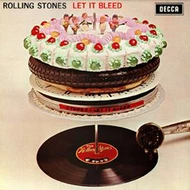
'Gimme Shelter'
From: 'Let It Bleed' (1969)
All of the elements come together on 'Gimme Shelter,' the anchor and lead track to one of the Stones' greatest albums: the ghostly intro riff, the thundering kick of the song's main melody, Merry Clayton's storming backing vocals. And then there's Jagger's deceiving indifference to the impending apocalypse. At first he sings with a reporter's objective sway, eventually turning hostile before resigning to his fate. Brilliant.
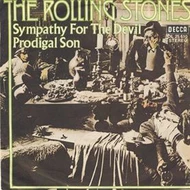
'Sympathy for the Devil'
From: 'Beggars Banquet' (1968)
Stemming from the same sessions that yielded 'Jumpin' Jack Flash' (see No. 3 on our list of the Top 10 Mick Jagger Rolling Stones Songs), 'Beggars Banquet' marks the band's most inspired, and inspiring, era. The album is filled with some of rock's most blazing moments -- none as dramatic or as menacing as the LP opener, 'Sympathy for the Devil.' The music builds over a sinister rhythm, and Jimmy Miller's production boils with anticipation. But it's Jagger who keeps it all burning. He sings like a man possessed.

